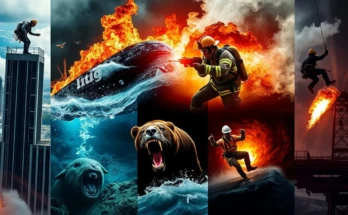Introduction

Imagine a serene room, the faint aroma of freshly brewed matcha wafting through the air, and a rhythmic ritual unfolding before your eyes. The Japanese tea ceremony, or chanoyu, is more than just sipping tea it’s an art form, a meditation, and a symbol of cultural refinement. Over centuries, this tradition has evolved, weaving spirituality, simplicity, and mindfulness into its fabric. Let’s dive into the captivating journey of the Japanese tea ceremony, tracing its roots, transformations, and spiritual significance.
The Origins of the Japanese Tea Ceremony
Chinese Influence on Early Tea Practices
The story of Japanese tea begins in ancient China. During the Tang Dynasty (618–907 AD), tea drinking emerged as a sophisticated cultural practice. Buddhist monks visiting China brought tea and its rituals back to Japan. Initially, tea was consumed primarily in temples as an aid to meditation.
The Introduction of Matcha
By the 12th century, matcha finely powdered green tea was introduced to Japan by the monk Eisai. Matcha quickly became popular among the elite for its purported health benefits and invigorating properties. The groundwork for chanoyu was laid.
Zen Buddhism and the Philosophy of Tea
The Zen Connection
Tea ceremonies are deeply rooted in Zen Buddhism. The focus on mindfulness, simplicity, and harmony mirrors Zen principles. Drinking tea was seen as a form of meditation a way to achieve enlightenment through everyday actions.
The Concept of Wabi-Sabi
Wabi-sabi, a central aesthetic in Japanese culture, celebrates imperfection and transience. This philosophy permeates tea ceremonies, from the rustic tea bowls to the simple yet profound setting. Each element reflects humility and acceptance of impermanence.
The Rise of Chanoyu in the Muromachi Period
Ashikaga Yoshimitsu and the Birth of Tea Rooms
During the Muromachi period (1336–1573), the shogun Ashikaga Yoshimitsu popularized tea gatherings among the samurai class. These early ceremonies were more lavish, showcasing expensive Chinese tea wares and emphasizing status.
Murata Jukō: The Father of Chanoyu
The simplicity of modern tea ceremonies owes much to Murata Jukō, a Zen practitioner. Jukō introduced the idea of using humble, locally crafted utensils and creating intimate tea rooms. His approach shifted the focus from luxury to spiritual communion.
Sen no Rikyū: The Tea Master Who Defined an Era
Rikyū’s Revolutionary Influence
Sen no Rikyū (1522–1591) is arguably the most iconic figure in the history of the tea ceremony. His philosophy emphasized four key principles: wa (harmony), kei (respect), sei (purity), and jaku (tranquility). These tenets remain the cornerstone of chanoyu.
The Chashitsu: A Sanctuary for Tea
Rikyū’s tea rooms, or chashitsu, were small and unadorned, embodying wabi-sabi. Guests entered through a low door, symbolizing humility, leaving worldly concerns behind. The chashitsu became a sacred space for connection and introspection.
The Rituals of a Traditional Tea Ceremony
Preparing the Space
Every detail of the tea room is meticulously arranged, from the scroll hanging in the alcove to the seasonal flower arrangements. These elements set the tone for the ceremony.
The Role of the Host
The host plays a pivotal role, carefully preparing utensils, boiling water, and whisking matcha with deliberate grace. Their movements are a performance in itself, each gesture embodying mindfulness.
The Guest’s Experience
For the guest, participating in a tea ceremony is equally ritualistic. They observe, appreciate, and respond with gratitude. The experience transcends drinking tea it’s a shared moment of spiritual alignment.
Also Check: From Support to Strain: The Unseen Costs of Agreeing to Disagree
The Evolution of Tea Utensils
From Lavish Imports to Local Craftsmanship
Early tea ceremonies showcased imported Chinese ceramics. Over time, local artisans began crafting tea bowls, ladles, and jars, reflecting Japanese aesthetics and materials.
The Importance of the Chawan (Tea Bowl)
The tea bowl is more than a vessel it’s a reflection of the ceremony’s spirit. Each chawan is unique, with imperfections celebrated as part of its beauty.
Seasonality in the Tea Ceremony
Adaptation to Nature’s Rhythms
Seasonality plays a vital role in tea ceremonies. From the type of tea served to the arrangement of the tea room, every detail changes with the seasons.
Seasonal Tea Gatherings
Special gatherings mark seasonal transitions, such as hatsugama (the first tea of the new year). These ceremonies honor the cyclical nature of life and deepen participants’ connection to nature.
Modern Adaptations of the Tea Ceremony
Tea Ceremonies in Urban Japan
While traditional tea houses remain, urban tea rooms cater to modern lifestyles, offering shorter, simplified versions of the ritual.
Global Influence and Adaptation
The philosophy of chanoyu has spread worldwide. From tea workshops in New York to Zen-inspired retreats in Europe, the tea ceremony continues to inspire across cultures.
The Spiritual Essence of Tea Ceremonies
Mindfulness in Every Sip
In a world dominated by distractions, tea ceremonies remind us to slow down and savor the moment. Every sip becomes an act of mindfulness.
A Universal Connection
Although deeply rooted in Japanese culture, the tea ceremony’s emphasis on harmony and respect resonates universally, offering a timeless message of unity.
Conclusion
The Japanese tea ceremony is far more than a cultural tradition; it’s a journey into the soul of Japan. From its Zen-inspired beginnings to its global influence, chanoyu remains a profound expression of spirituality, simplicity, and connection. Whether you’re a seasoned tea enthusiast or a curious newcomer, participating in a tea ceremony is an invitation to pause, reflect, and embrace the beauty of the moment.
Also Read: From Skinny to Thick: The Ever-Changing Beauty Standards for Women
FAQs
What are the four principles of the Japanese tea ceremony?
The principles are wa (harmony), kei (respect), sei (purity), and jaku (tranquility). They guide every aspect of the tea ceremony, fostering mindfulness and connection.
How long does a traditional tea ceremony last?
A full tea ceremony, including meal and tea service, can last up to four hours. Simplified versions typically take 30–60 minutes.
What is the significance of wabi-sabi in tea ceremonies?
Wabi-sabi celebrates imperfection, simplicity, and the beauty of impermanence. This aesthetic is central to the tea ceremony, reflected in the tea room, utensils, and overall ambiance.
Can beginners participate in a tea ceremony?
Absolutely! Many tea houses welcome beginners and provide guidance on etiquette and participation. It’s a great way to experience this timeless tradition.
How has the tea ceremony influenced modern mindfulness practices?
The tea ceremony emphasizes being present and mindful in each moment. These principles align closely with modern mindfulness practices, making it a source of inspiration for many.


